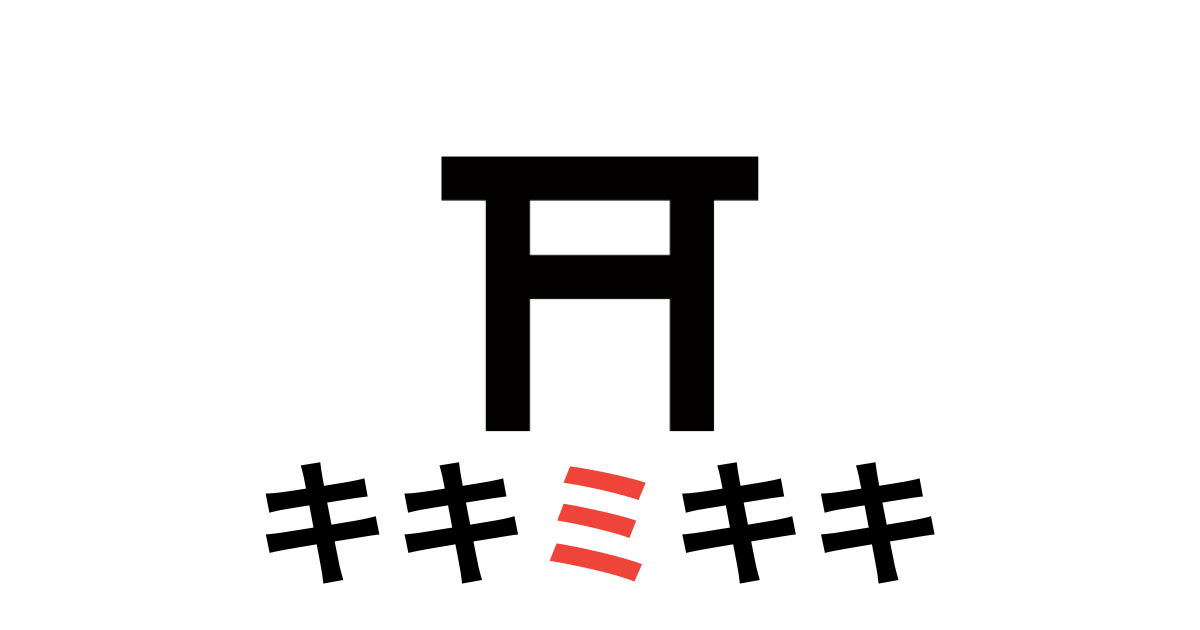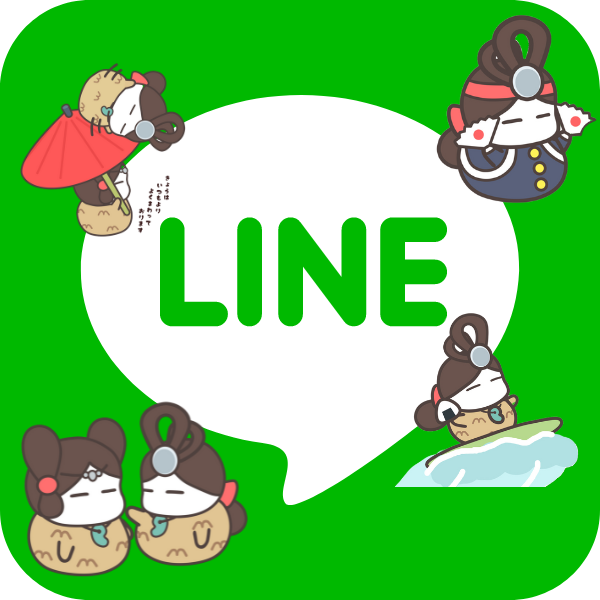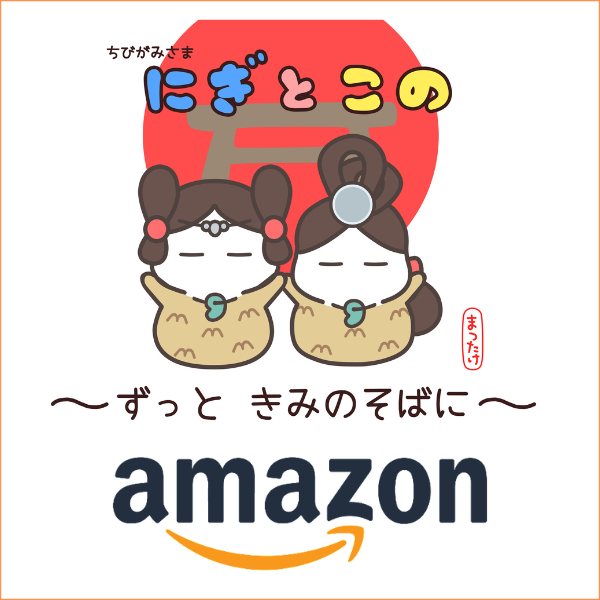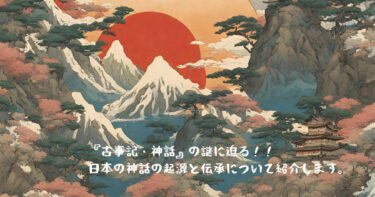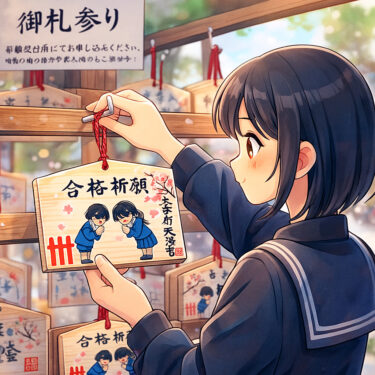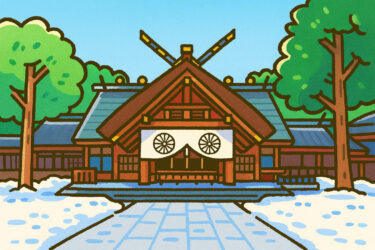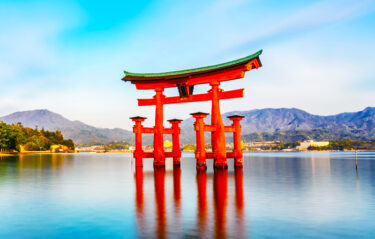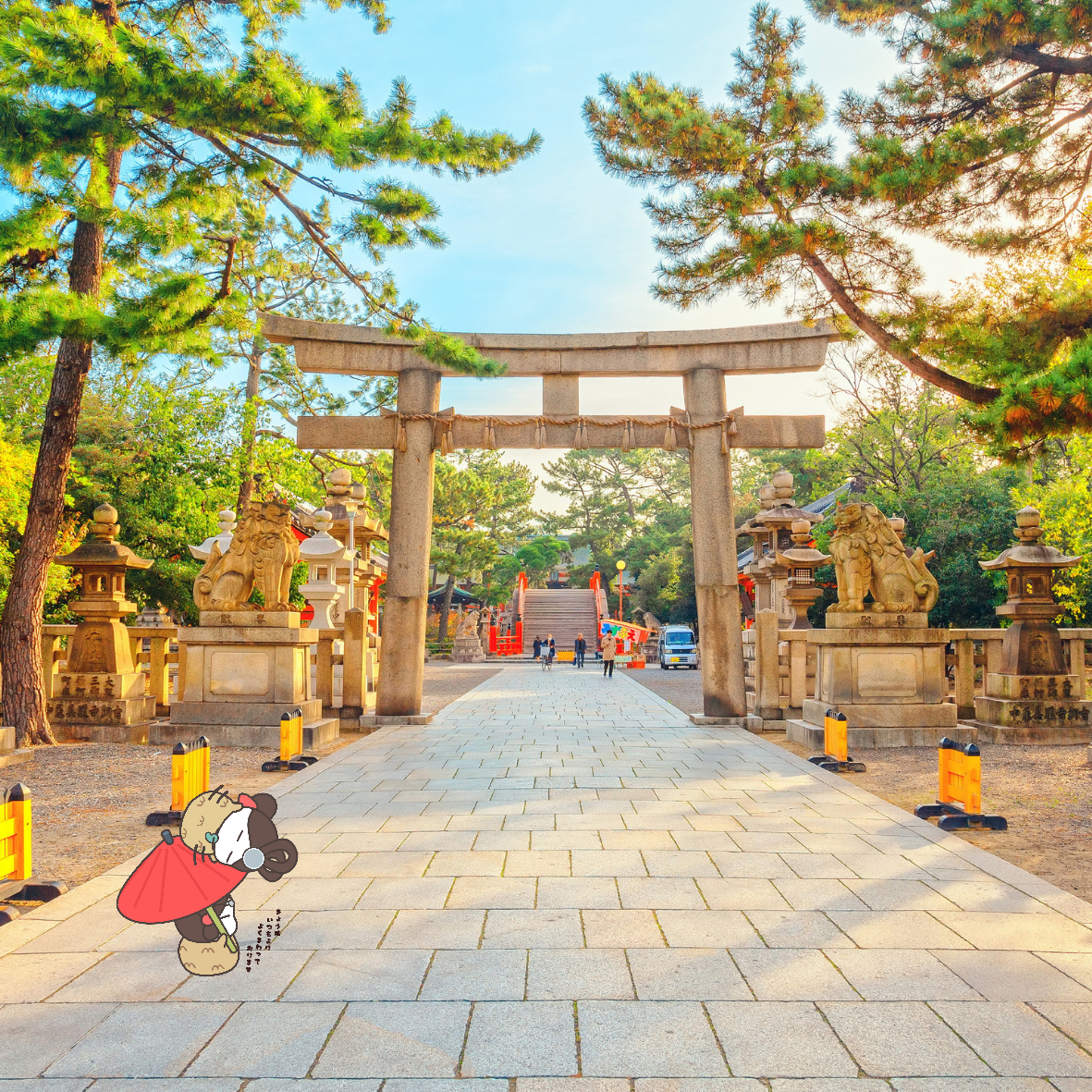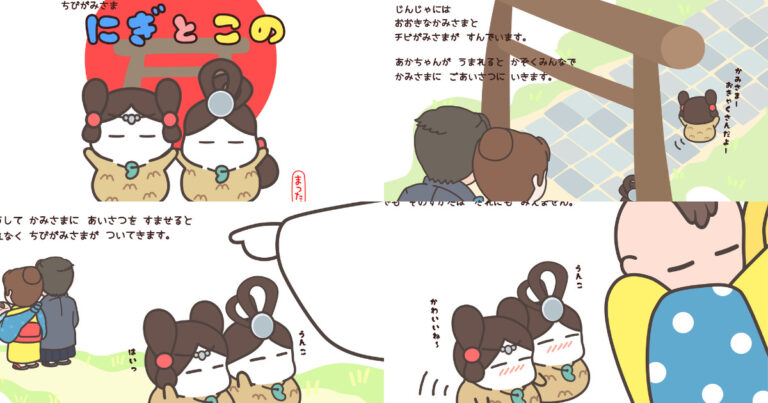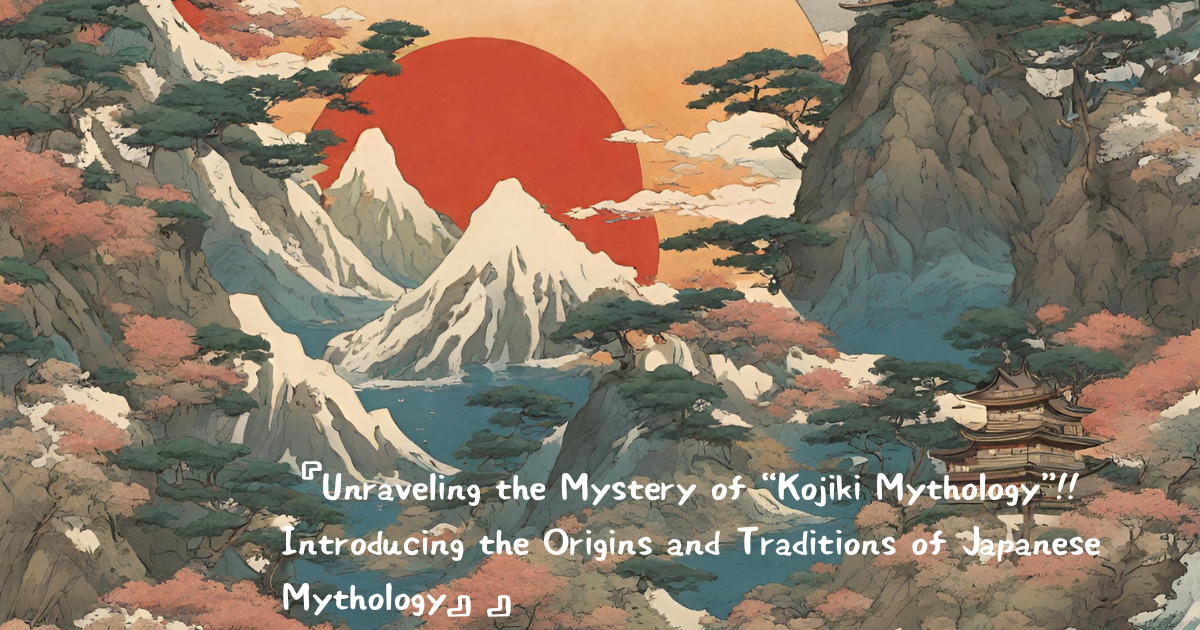
- 1 Unraveling the Mystery of “Kojiki Mythology”!! Introducing the Origins and Traditions of Japanese Mythology.
- 1.1 1. Introduction
- 1.2 2. Overview of the Kojiki
- 1.3 ■Compilation Background
- 1.4 3. major myths
- 1.5 4. Mythology and the Origins of Japan
- 1.6 5. Characteristics of the Kojiki
- 1.7 6. Significance of the Kojiki
- 1.8 ■Reitaisai (例大祭)
- 1.9 7. Points to Consider When Reading the Kojiki
- 1.10 The Kojiki mythology allows for various interpretations, enriched with context and literary elements.
- 2 8. Conclusion
Unraveling the Mystery of “Kojiki Mythology”!! Introducing the Origins and Traditions of Japanese Mythology.
I will introduce in detail the myths within the Kojiki, focusing on the tiny divine beings and their charming stories.
Nigi・Ko’s official Instagram & LINE stamps
What is a “Chibi Kamisama”!? Introduction to the [Nigokono] Profile!!
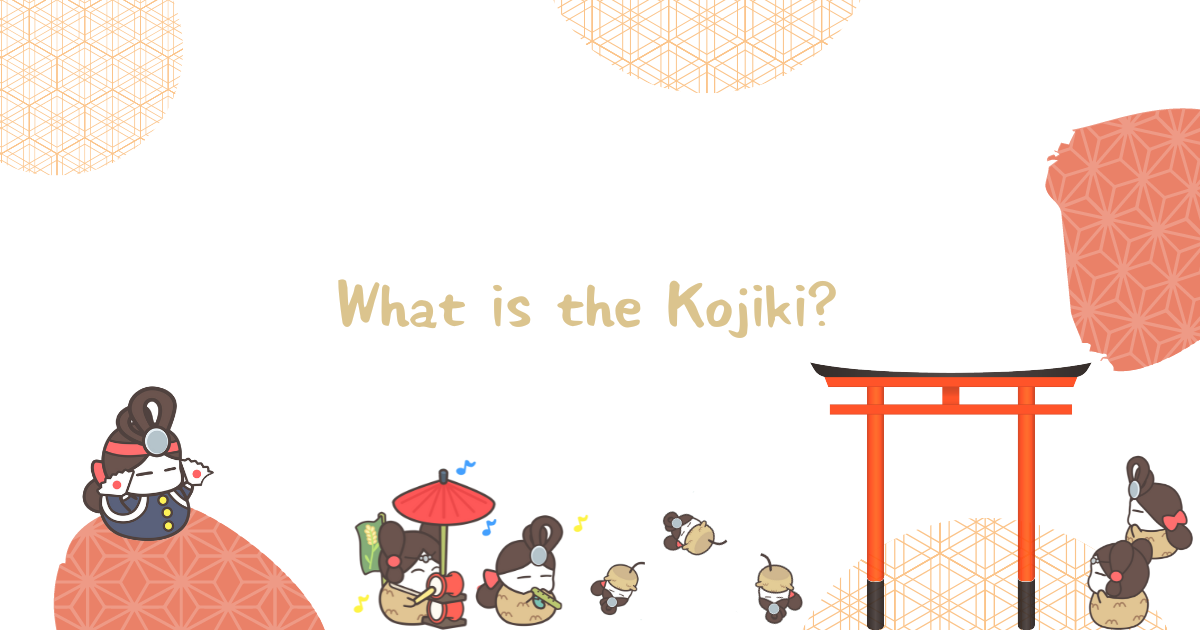
1. Introduction
Introduction: An Invitation to the Miracles of Ancient Mythology!
Welcome to the mysterious world of Japan! In this blog, we will delve into the enchanting realm of ancient Japanese mythology, focusing on the keyword “Kojiki Myth.”
Let’s embark on a journey together to explore the wondrous tales of adventure featuring Amaterasu Omikami and Susanoo no Mikoto.
The enigmatic world of ancient times speaks to us as a treasury of history and culture.
Why not open that door together and share the joy of delving into the myths of the Kojiki? Exciting and astonishing adventures await you!
What is the Kojiki?
■A Timeless Text Approaching the Source of Japanese Mythology
The Kojiki, a key to unraveling Japanese mythology and history.
This article aims to answer the fundamental question: What exactly is the Kojiki?
We’ll trace the origins of Japanese mythology, exploring why this classic text is considered the foundation of Japanese culture.
Stepping into the world of mythology, we’ll delve into the charm and significance of the Kojiki, making it accessible to readers.
Let’s comprehend the gift from ancient times and collectively feel the depth of Japanese mythology!
What is Mythology?
■Exploring the Allure of Japanese Mystery
Mythology exists in a realm distinct from both history and imagination.
This article delves into the fundamental question, “What is mythology?”
Focusing on the unique context, symbols of Japanese mythology, and the hidden meanings within the Kojiki, we explore how mythology intertwines with culture and belief.
Through the intertwining of mystery and lessons in the world of mythology, let’s catch a glimpse of the wisdom and beauty from ancient Japan.
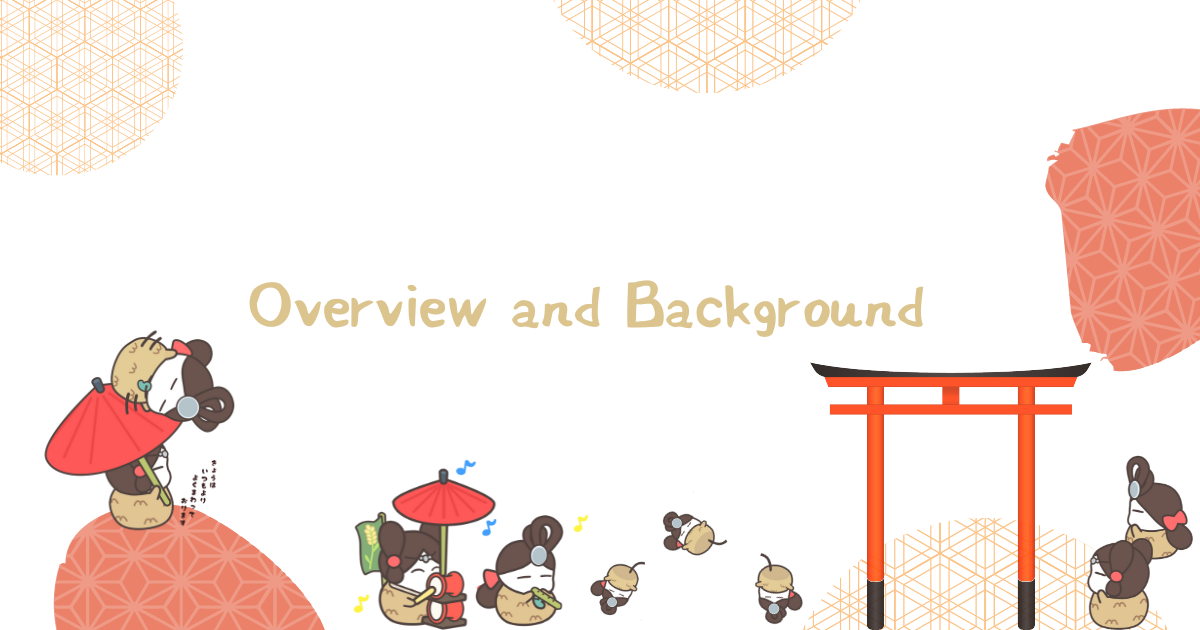
2. Overview of the Kojiki
The Kojiki is a crucial document that conveys Japanese mythology and history.
Filled with various myths featuring deities like Amaterasu Omikami and Susanoo no Mikoto, it is a classical work that unravels the origins and culture of Japan.
■Compilation of the Kojiki
The Kojiki was written in the early years of the Nara period, completed in 712. It is believed to have been compiled under the direction of an official and scholar named Fujiwara no Fuhito. During this era, the compilation of Japan’s history and mythology laid the foundation for transmission to future generations.
■Compilation Background
The political and social circumstances of the time significantly influenced the compilation of the Kojiki.
In the early Nara period, as the emperor consolidated power and aimed for national stability, there arose a necessity to compile history and mythology to reinforce the identity of the state. Fujiwara no Fuhito and his team undertook this compilation with the aim of contributing to the unification of the nation and the formation of its culture.
As a result, Japanese mythology and history were passed down to later generations, contributing to the establishment of the country’s identity.
■Brief Introduction to Important Myths
The Kojiki contains numerous significant myths, with notable ones including the hiding of Amaterasu Omikami in the rock cave and the tumultuous actions of Susanoo no Mikoto.
Myths depicting the descent of the heavenly offspring and the formation of the country’s land convey the origins of Japan and the sanctity of the imperial family.
These myths form the foundation of Japanese culture and faith, providing clues to understanding the enigmatic ancient world alongside its historical background.
Let’s explore the profound meanings concealed behind the myths and delve into the spirit of ancient Japan.
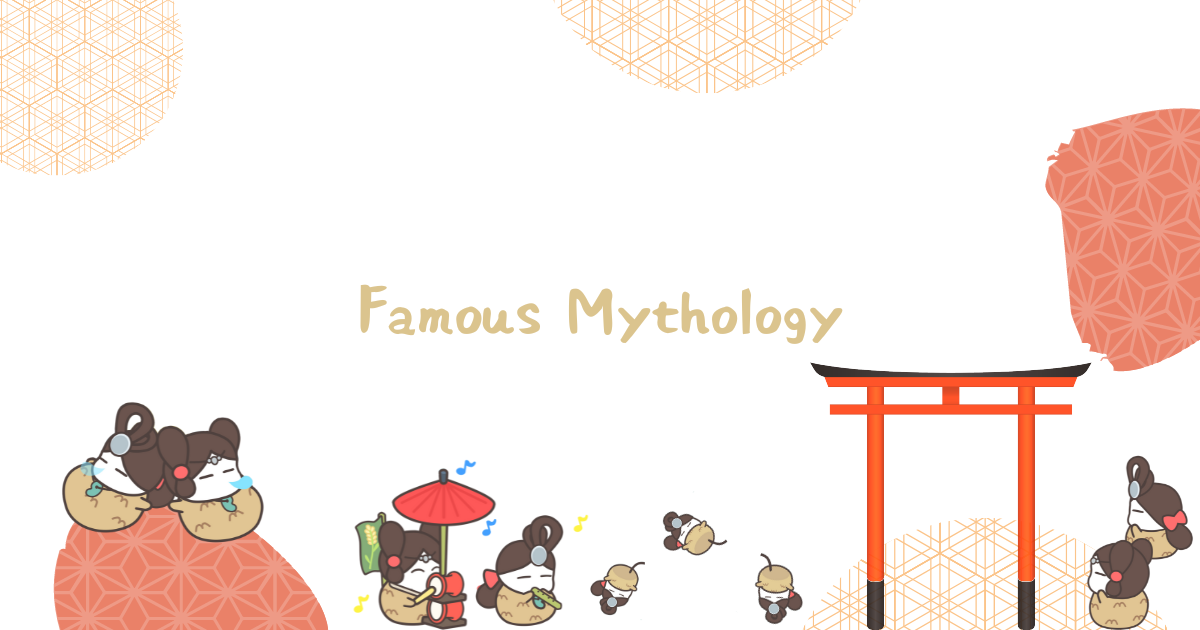
3. major myths
1. **Creation of Izanagi and Izanami**
– First, in mythology, the male god Izanagi and the goddess Izanami created the gods and the Japanese archipelago.
2. **Misogi ritual**
– Izanagi performed “misogi”. Misogi is a ritual to purify one’s body, and this act creates impurity among the gods.
3. **Birth of Amaterasu**
– During purification, Izanagi was born from Amaterasu through his left eye, nose, or head. Amaterasu is the goddess of the sun and is considered a symbol of beauty and brilliance.
4. **Existence as Amaterasu Omikami**
– Amaterasu was later called “Amaterasu-Omikami” and was worshiped as the god of the sun. Amaterasu’s deity is deeply rooted in Japanese history and culture, with the Japanese imperial family revering Amaterasu as their ancestral deity, and the Emperor being called the “Son of Heaven” (Amatsumiko).
“This myth is described in classical literature such as the ‘Kojiki’ and ‘Nihon Shoki,’ forming the foundation of Japanese mythology and belief systems.
■The Myth of the Opening of the Rock Cave
The myth of the opening of the rock cave narrates the story of Amaterasu Omikami hiding in the Amanoiwato cave and saving the world enveloped in darkness.
According to the Kojiki, through the struggle with the eight-forked serpent and the laughter of the gods induced by the dance of Ameno Uzume, Amaterasu Omikami once again shone brightly, and the world was bathed in light.
This myth holds significance within the Japanese mythological system, and the symbolic moment of the rock cave opening is an indispensable episode in Japanese creation mythology.
Let’s delve into the mysteries of the Kojiki and unravel the lessons brought by the myth of the rock cave opening.
■The Exploits of Susanoo no Mikoto
Among the gods depicted in the Kojiki, Susanoo no Mikoto is known for his turbulent nature.
His exploits are crucial in mythology, depicting his journey to the land of Toyohashihara and battles with Yamata no Orochi.
While Susanoo no Mikoto harbors contradictory aspects among the gods, ultimately, he reconciles with Amaterasu Omikami and is revered as the god of the sea and agriculture.
This blog article focuses on the myth of Susanoo no Mikoto, probing into his complex character and the lessons conveyed by the mythology.”
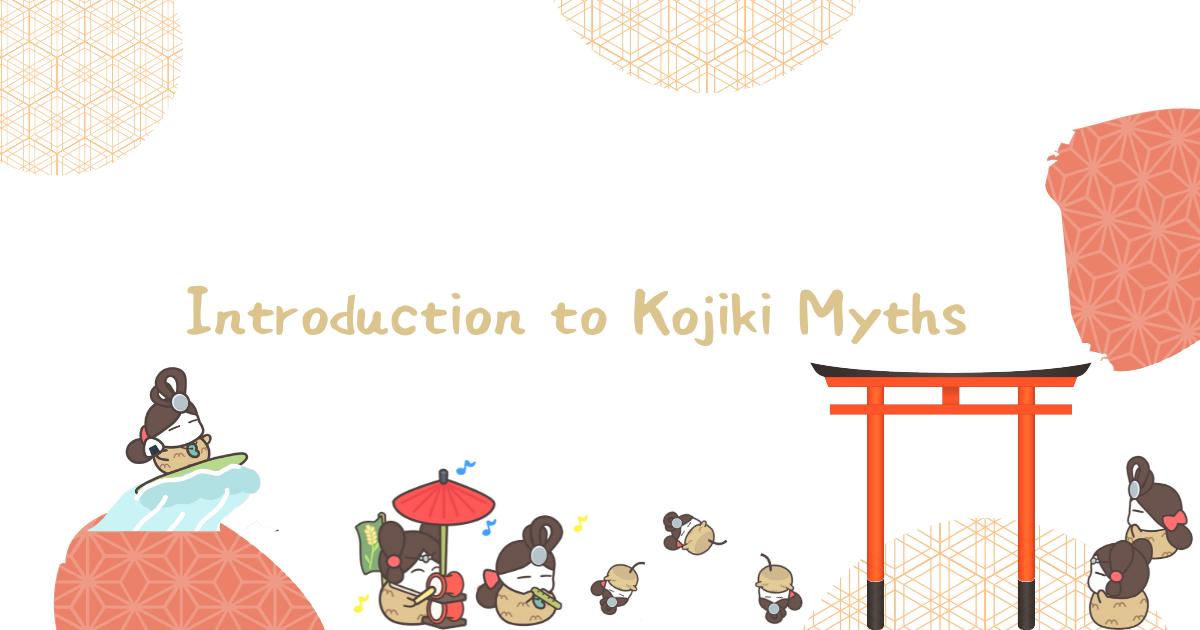
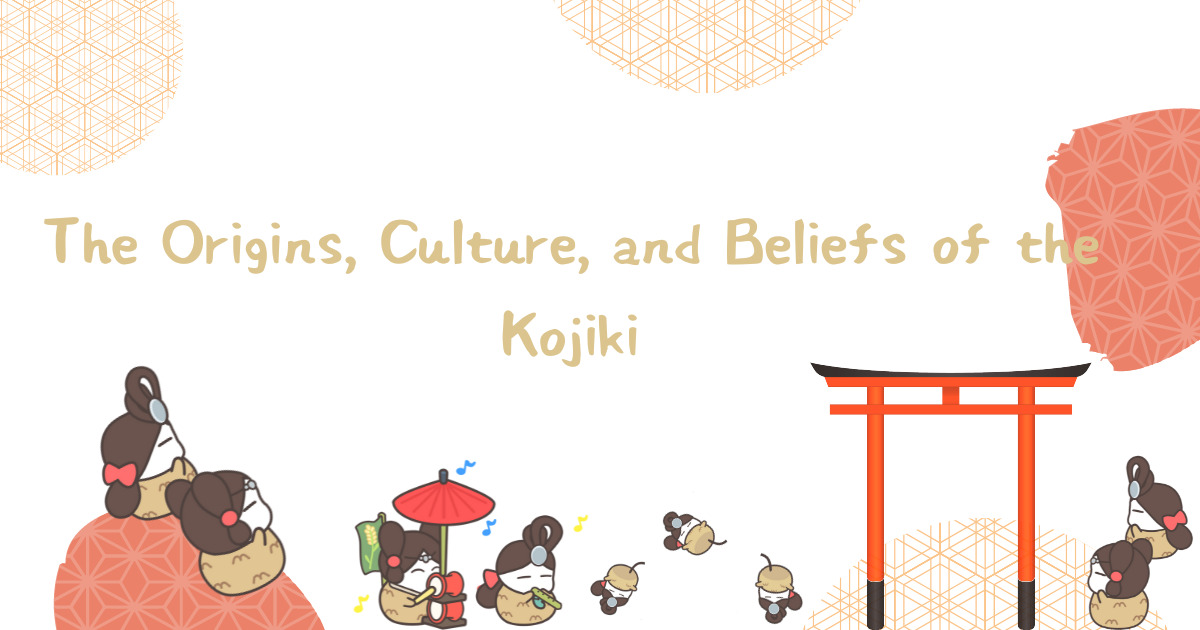
4. Mythology and the Origins of Japan
The “Kojiki” mystically colors the origins of Japan.
Births of deities and significant events are chronicled, and in this article, we will explore the impact these myths have had on Japanese culture and society.
Delving into the history and cultural formation of Japan glimpsed through the myths of the Kojiki, let’s touch the enchanting world of these mysterious tales.
■Mythology and Japanese Culture
Japanese culture is rooted in mythology.
The myths depicted in the “Kojiki” have shaped Japanese traditions and values through the mystical adventures and interactions of the gods.
This article focuses on the profound influence of mythology on Japanese culture, exploring how the wisdom embedded in these myths is reflected in Japanese arts, festivals, and beliefs.
Let’s catch a glimpse of the rich heritage of Japanese culture woven by the myths of the Kojiki.
■Ancient Beliefs and Influence*
The myths of the Kojiki are deeply rooted in ancient Japanese beliefs and have had a significant impact.
For instance, the myth of Amaterasu Omikami is linked to the imperial family, becoming the origin of the imperial system.
Additionally, the worship of the fertility deity Wakasachinomikoto was crucial in agrarian societies.
This article delves into the influence of ancient beliefs on Japanese society, providing specific mythological examples.
Let’s unravel the sacred world and the cultural legacy brought forth by the Kojiki.
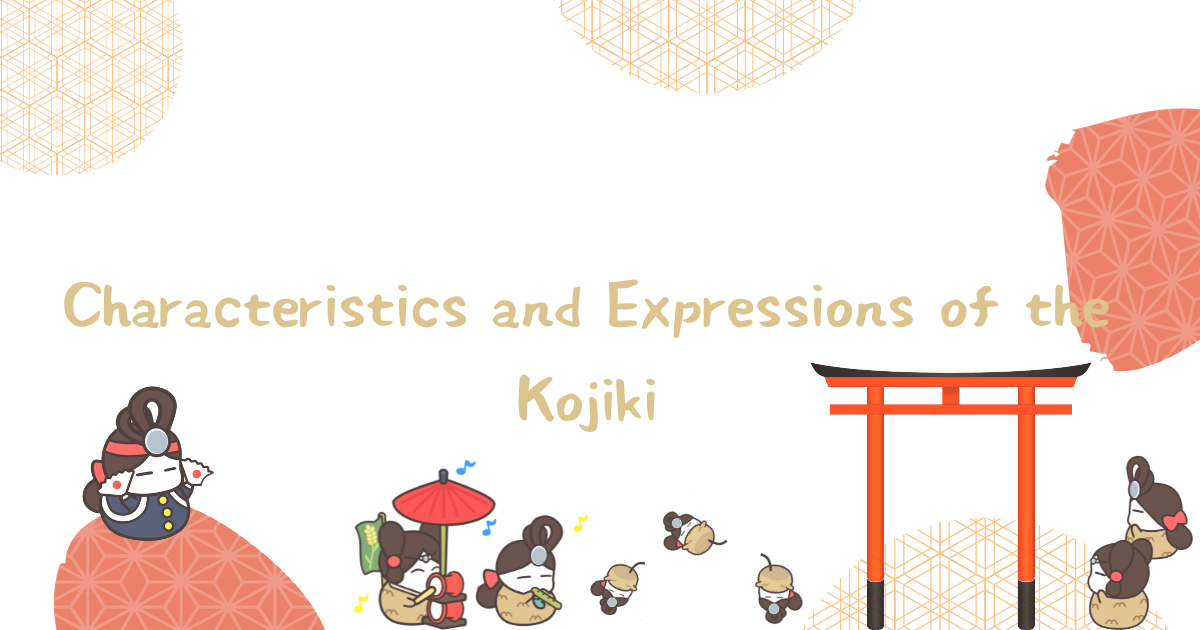
5. Characteristics of the Kojiki
The Japanese classic, the “Kojiki,” traces the origins of mythology, narrating the stories of gods and heroes.
It is characterized by an epic literary style and mystical expressions, vividly depicting the creation of heaven and earth and the adventures of the gods.
■Style and Expression
The myths of the “Kojiki” are renowned for their unique style and expression.
The delicate brushstrokes enhance the depth of the mythology, while the mystical language beckons readers into the world of myths.
The epic descriptions vividly portray the creation of heaven and earth and the adventures of the gods, holding a distinctive place in Japanese literature.
■Relevance to Historical Background*
Relevance to Historical Background: The Sparkling Connection Between Kojiki Myths and Japan’s History
The myths of the “Kojiki” are closely intertwined with Japan’s historical background.
For instance, the unruly actions of Susanoo no Mikoto created a connection with Ameno-Uzume, revered as the deity of rice cultivation, influencing the formation of agrarian societies.
Similarly, the myth of slaying Yamata no Orochi narrates the need for cooperation and collaboration between tribes, symbolizing the unification of ancient Japan.
Focusing on the connection between the myths depicted in the “Kojiki” and historical events, we delve into the depth of ancient Japanese history.
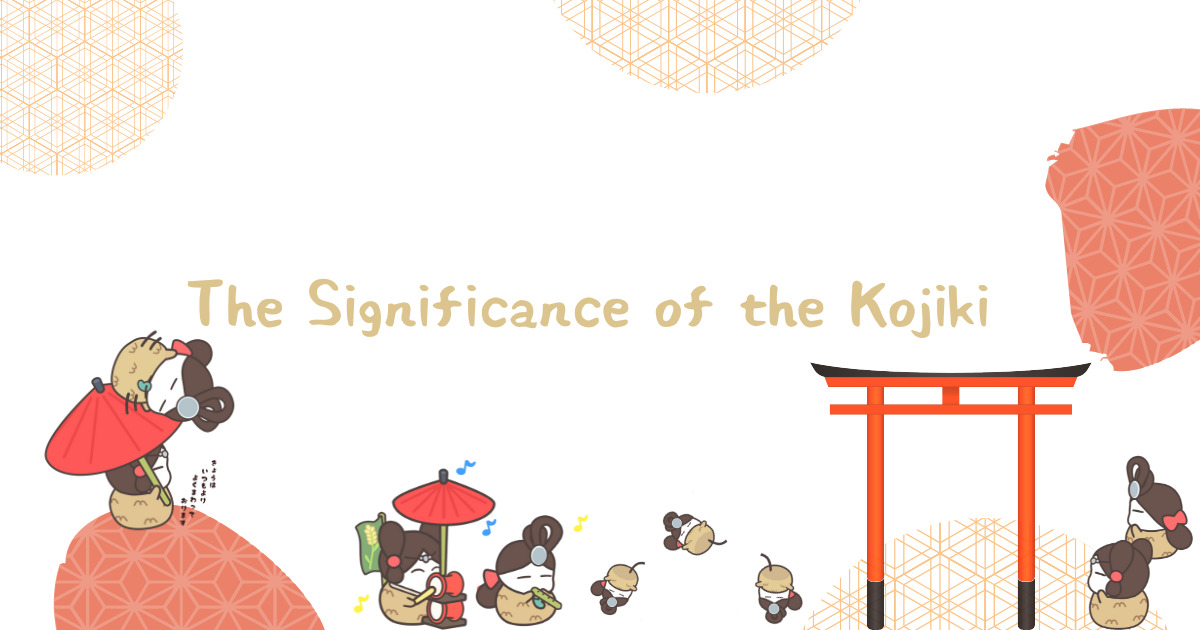
6. Significance of the Kojiki
Ancient tales woven by Japanese mythology— the origin of culture, a bridge between history and faith. The Kojiki shapes Japan’s identity, serving as a crucial historical document that connects the past and future through myths.
■Connection to Japanese Traditions

Niiname-sai (新嘗祭)
This festival is associated with Ameno-Uzume-no-Mikoto, the deity of rice cultivation, featured in the Kojiki.
Niiname-sai, or the “First Taste Festival,” gets its name from the Emperor tasting the first newly harvested rice. This ritual symbolizes gratitude for Japan’s agrarian culture and abundance of the harvest, continuing as a traditional event to celebrate the richness of the harvest.
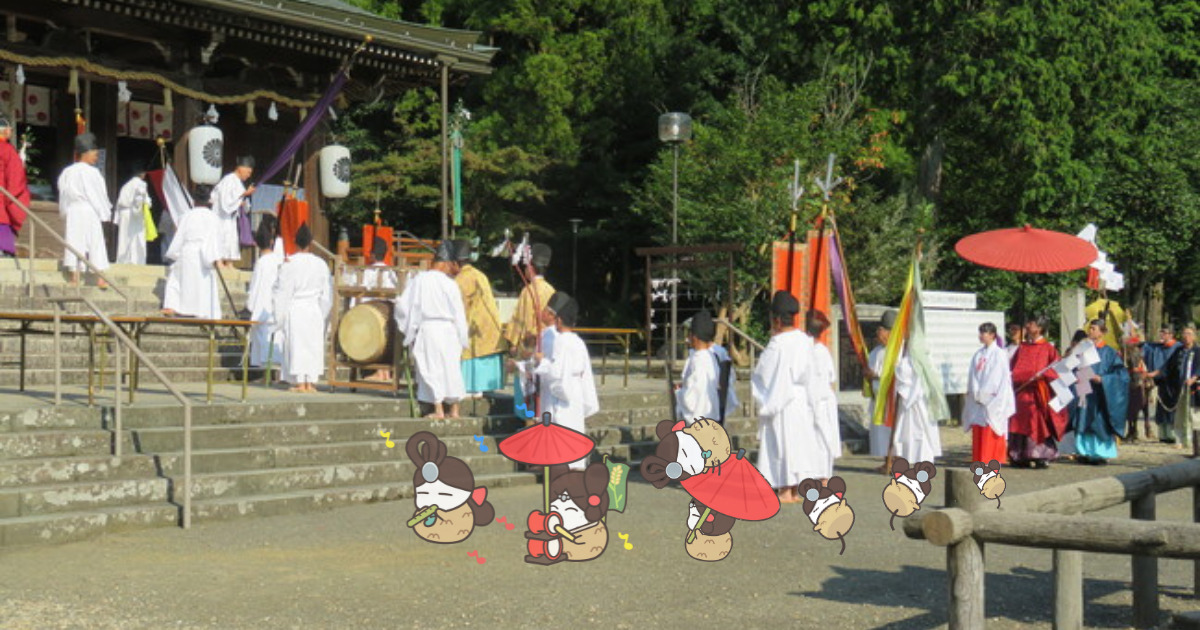
■Reitaisai (例大祭)
Festivals honoring the gods from the Kojiki are held nationwide.
For example, the Grand Shrine Festival (Jingu Reitaisai) at Ise Jingu dedicates prayers and gratitude to deities such as Amaterasu and Toyuke no Kami. It is renowned as one of Japan’s traditional festivals.
■Cultural Significance*
The “Kojiki Mythology” exerts a profound influence on Japanese culture.
The myths reflect Japan’s origins and spirit, containing essential information at the core of history and tradition. These ancient stories serve as clues to understanding Japan’s values and belief systems, contributing to the formation of cultural identity even in modern times.
Exploring the “Kojiki Mythology” deepens insights into Japanese culture, fostering a sense of connection between tradition and the contemporary.
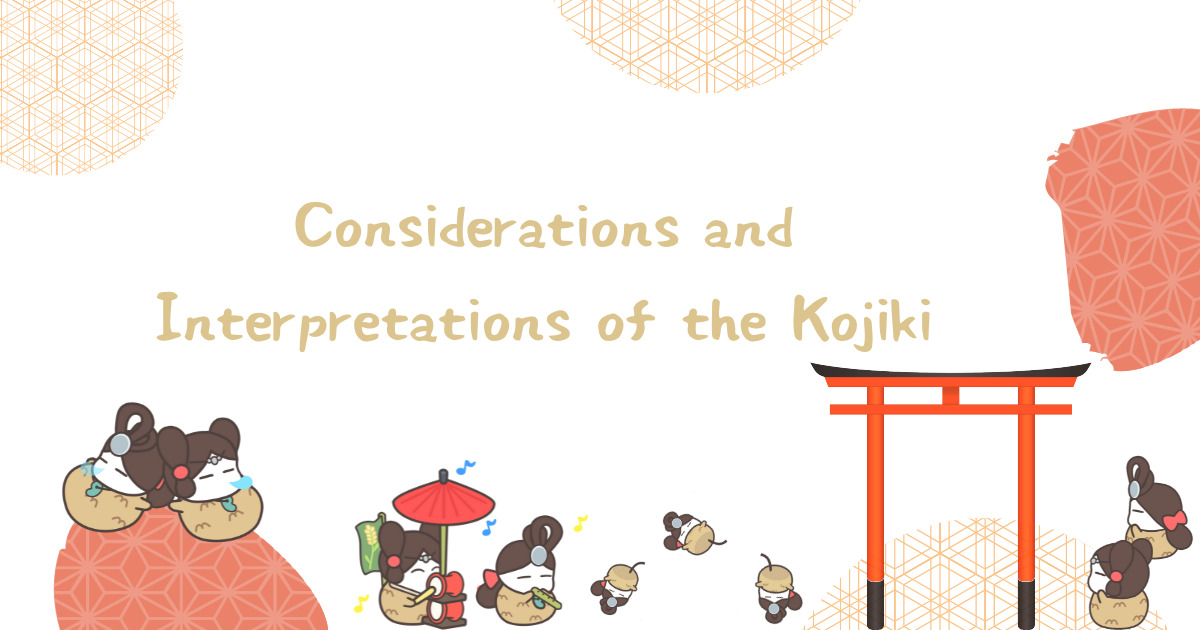
7. Points to Consider When Reading the Kojiki
Here are two points to consider when reading the Kojiki:
■Archaic Language and Modern Japanese
The literary style of the Kojiki is referred to as “Kobun,” which is distinct from contemporary Japanese.
Using classical grammar and archaic language, it may be confusing for first-time readers. However, this archaic expression adds an epic quality, portraying Japanese mythology and history with a unique atmosphere.
Readers should pay attention to the change in writing style, transport themselves to ancient Japan, and enjoy the world of mythology. It is essential to engage with the language of the Kojiki, appreciating its distinctive beauty and depth, while referencing annotations and explanations.
■Interpreting the Mythology
The Kojiki mythology allows for various interpretations, enriched with context and literary elements.
Readers should embrace the stories from their unique perspectives, understanding the flexibility that allows for different interpretations of the myths. Myths can be understood differently based on culture and era, and this diversity serves as a guide to discovering profound lessons and beauty.
By comparing the Kojiki with personal experiences and connecting it with individual values and sensibilities, readers can gain new insights. Flexibility and an open mind are key to deep understanding when it comes to interpreting mythology.
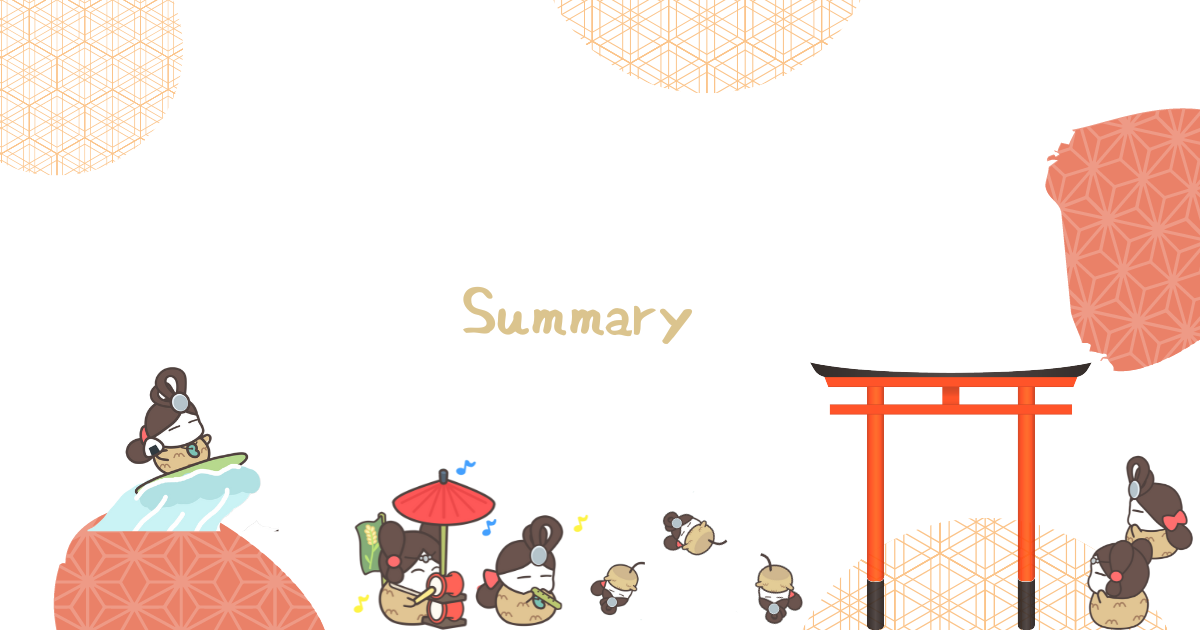
8. Conclusion
■Reiterating the Significance of the Kojiki
The myths of the Kojiki are invaluable resources essential for understanding Japanese culture and history. These myths depict the creation of the nation and the adventures of gods, forming the foundation of Japan’s identity. The Kojiki encompasses not only the beauty of language and style but also profound lessons and philosophy. Readers can savor the wisdom and rich expressions hidden within the myths, feeling the ancient wisdom from times past. By glimpsing into the spirit and values of Japan through the Kojiki, our understanding of our culture is bound to deepen.
■An Appeal to the Readers
Thank you for reading the articles on “Kojiki Mythology.” It is hoped that delving into Japanese mythology and touching its mysteries has provided insight into the depth of Japanese culture. Mythology is more than just stories; it deeply intertwines with our history, faith, and identity. Through this exploration, rediscovering ancient wisdom and beauty and aligning it with our contemporary values would be a delightful outcome.
We plan to continue exploring interesting topics about Japanese traditions and culture in the future, and we hope you will continue to accompany us on this journey.
Thank you very much.
9. References
Books and Materials Related to the Kojiki:
Official Institutions Introducing Japanese History and Culture:
Specialized Sites on Mythology:
Sites by Historians and Cultural Researchers:
Academic Papers and Articles from Academic Institutions:
Digitized Materials from the National Diet Library:
Introducing Nigi/kono

What is a “Chibi Kamisama”!? Introduction to the [Nigokono] Profile!!
Nigiko’s official line
Nigiko’s book
Nigiko’s official goods
【Going with Matsutake ~Kikiki Diary~】➡GO
For those who have developed an interest through this site and would like to delve a bit deeper, we recommend the following books.
